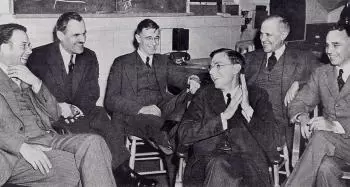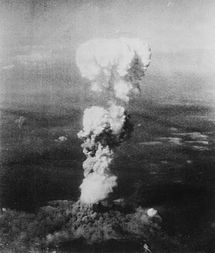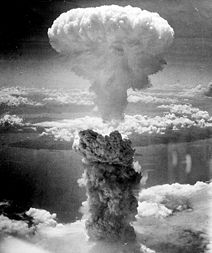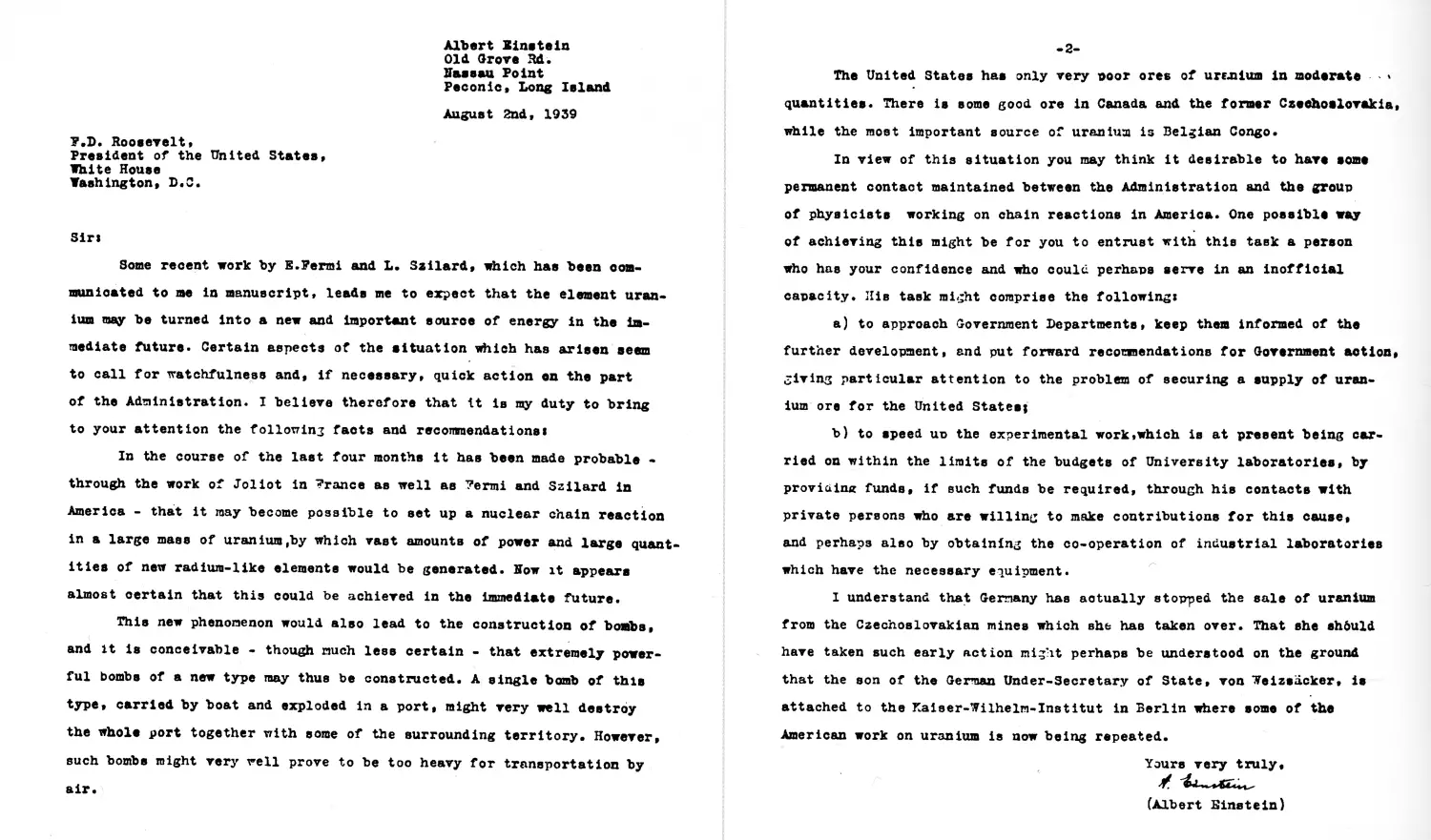
The Manhattan Project is the code name given by Roosevelt to a top-secret project to obtain the nuclear bomb. The project was under the direction of Major General Leslie Groves of the U.S. Army Corps of Engineers.
In 1939, at the beginning of World War II, Albert Einstein alerted the United States’ President, FD Roosevelt. He wrote a letter telling him that the atomic bomb is possible and that the Germans could have it.
Einstein was sure that it was possible to achieve a nuclear chain reaction. Einstein based his speculations on the research work carried out by:
-
Enrico Fermi and Leo Szilard, in the United States
-
Frédéric Joliot and his wife Irene Joliot-Curie, in France.
This procedure would also allow the construction of a new class of bombs.
Why did the united states begin the Manhattan Project?
The beginnings of the Manhattan Project were a consequence of a letter that A. Einstein sent to President Roosevelt.
Einstein mentioned the shortage of uranium reserves in the USA. The mines for this mineral - he said - were in former Czechoslovakia and the Belgian Congo.
The letter was
Furthermore, he reported that Germany had suspended uranium sale from Czech mines, which the Reich had taken over. This fact could mean that scientists at the Kaiser Wilhelm Institute could be conducting nuclear fission experiments. It would mean that in the next step, Nazi Germany could get nuclear weapons.
Albert Einstein's fear of nuclear war could be a consequence of his profound knowledge of research advances in this field.
Who authorized the Manhattan Project?
Franklin D. Roosevelt created a commission to deal with the issues above, resulting from the letter.
Between 1940 and 1941, the commission to work on uranium and graphite systems. In the late 1940s, Glen Seaborg discovered an artificial element that could be used to make the atomic bomb (plutonium-239).
The Manhattan Project officially began in 1941 with the Japanese attack on the Pearl Harbor military base. His collaborators included several Nobel laureates, including Edward Teller. However, Albert Einstein was not directly involved.
At the inception of the Manhattan Project, Robert Oppenheimer played a pivotal role as scientific director as he was appointed as the project's scientific lead due to his impressive credentials in theoretical physics and his knowledge at the forefront of scientific research at the time. His ability to assemble and coordinate some of the best scientists and engineers in the country was key to the success of the project.
The bomb’s manufacture was entrusted to the army in a war project that would cost around 2,500 million dollars. The program contemplated two alternatives:
-
The separation of uranium-235 from uranium-238.
-
The production of plutonium-239 in graphite reactors.
The U.S. Department of Energy (DOE) has developed a wide range of Manhattan Project historical resources.
The wartime Manhattan Project left a legacy in the form of national laboratories:
-
The Lawrence Berkeley National Laboratory.
-
Los Alamos National Laboratory.
-
Oak Ridge National Laboratory.
-
Argonne National Laboratory.
-
Ames Laboratory.
Why was it called the Manhattan Project?
The project’s name was the Manhattan Project because of the engineer districts. By convention, they carried the city’s name where they were located. In this case, the project was designated to the Manhattan District.
What was the world's first nuclear reactor?
Chicago Pile (CP-1) was the name of the world's first nuclear reactor. It was developed within the Manhattan Project.
On December 2, 1942, man achieved the first artificial nuclear chain reaction. Until then, it was only theoretical physics.
A group of European nuclear physicists who emigrated to the United States carried out the work. The Italian physicist Enrico Fermi led them.
In 1943 there were three cities full of research facilities:
-
Oak Ridge (Tennessee) to separate uranium-235 from uranium-238.
-
Hanford for the establishment of nuclear reactors.
-
Los Alamos (New Mexico) for the construction of the atomic bomb. The Los Alamos laboratory director was Robert Oppenheimer of the University of California. Oppenheimer was able to reunite to near a thousand scientists who would remain there until six months after finishing the fight.
As scientific director of the Manhattan Project, Oppenheimer was responsible for overseeing and coordinating research and development at the three main laboratories involved in the Manhattan Project: Los Alamos National Laboratory in New Mexico, the Berkeley Radiation Laboratory in California, and the Metallurgical Laboratory in Chicago.
What looked like the Chicago Pile?
The Chicago Pile (CP-1) nuclear reactor was simple in structure. It was installed under the grandstand of the American football stadium at the University of Chicago.
Fermi used uranium fuel, like the one used in Rome’s experiments, and a graphite moderator.
What was the purpose of the Chicago Pile reactor?
The objective of the research was to obtain a controlled chain reaction. The experiment would allow the study of its properties for the possible development of an atomic bomb.
The fission chain reaction started after the control rods were carefully removed. At this time, the first nuclear reactor in the history of nuclear power came into operation.
Trinity: The First Nuclear Test
In the early morning of July 16, 1945, the first plutonium atomic bomb test was successfully carried out in the Alamogordo desert (New Mexico).
The uranium and plutonium atomic bombs were ready at the same time.
Result and consequences of the Manhattan Project
The most significant result of the Manhattan Project was the successful development of the first atomic bomb.
The project successfully built and tested two types of nuclear bombs: one based on the uranium-235 isotope, known as "Little Boy", which was used in the bombing of Hiroshima on August 6, 1945, and another based on the isotope of plutonium-239, called "Fat Man", which was used in the bombing of Nagasaki on August 9, 1945.

 The Japanese cities of Hiroshima and Nagasaki thus became the first and so far the only targets of an atomic bomb attack in history.
The Japanese cities of Hiroshima and Nagasaki thus became the first and so far the only targets of an atomic bomb attack in history.
The consequences of the Manhattan Project were deep and far-reaching:
-
End of World War II: The atomic bombs dropped on Hiroshima and Nagasaki hastened the end of World War II by forcing Japan to surrender unconditionally. The devastation and human losses caused by the bombs led Emperor Hirohito to order the capitulation of Japan on August 15, 1945, ending the war.
-
Beginning of the nuclear age: The Project marked the beginning of the nuclear age, since it was the first time that nuclear weapons were used in combat. This had a significant impact on international relations and the nuclear arms race during the Cold War.
-
Nuclear proliferation: The successful development of atomic bombs caused other countries to seek to develop their own nuclear weapons, leading to a nuclear arms race during the Cold War and beyond. This led to the creation of the Nuclear Powers Club, made up of countries with officially recognized nuclear weapons.
-
Development of nuclear energy: In addition to its military application, the Manhattan Project also laid the foundation for the development of nuclear energy for peaceful purposes. The knowledge and technology gained from the project was used to establish nuclear power programs around the world.
-
Ethical Questions: The use of atomic bombs in Japan raised serious ethical questions about the use of weapons of mass destruction and the devastating effects they can have on civilian populations.
-
Controversy and moral dilemmas: The role of scientists in the development of the atomic bomb, including Robert Oppenheimer, generated debates and moral dilemmas about the responsibility of scientists in using their knowledge to create weapons of this type.
